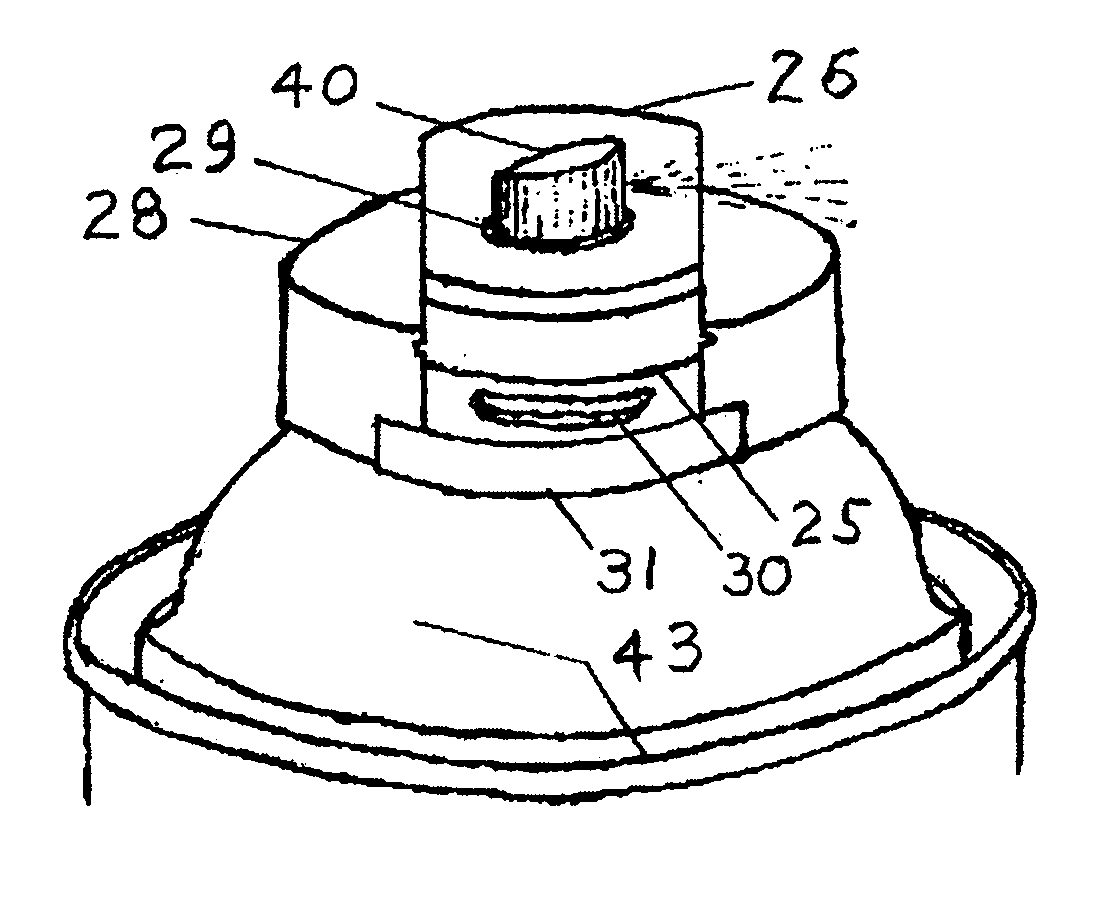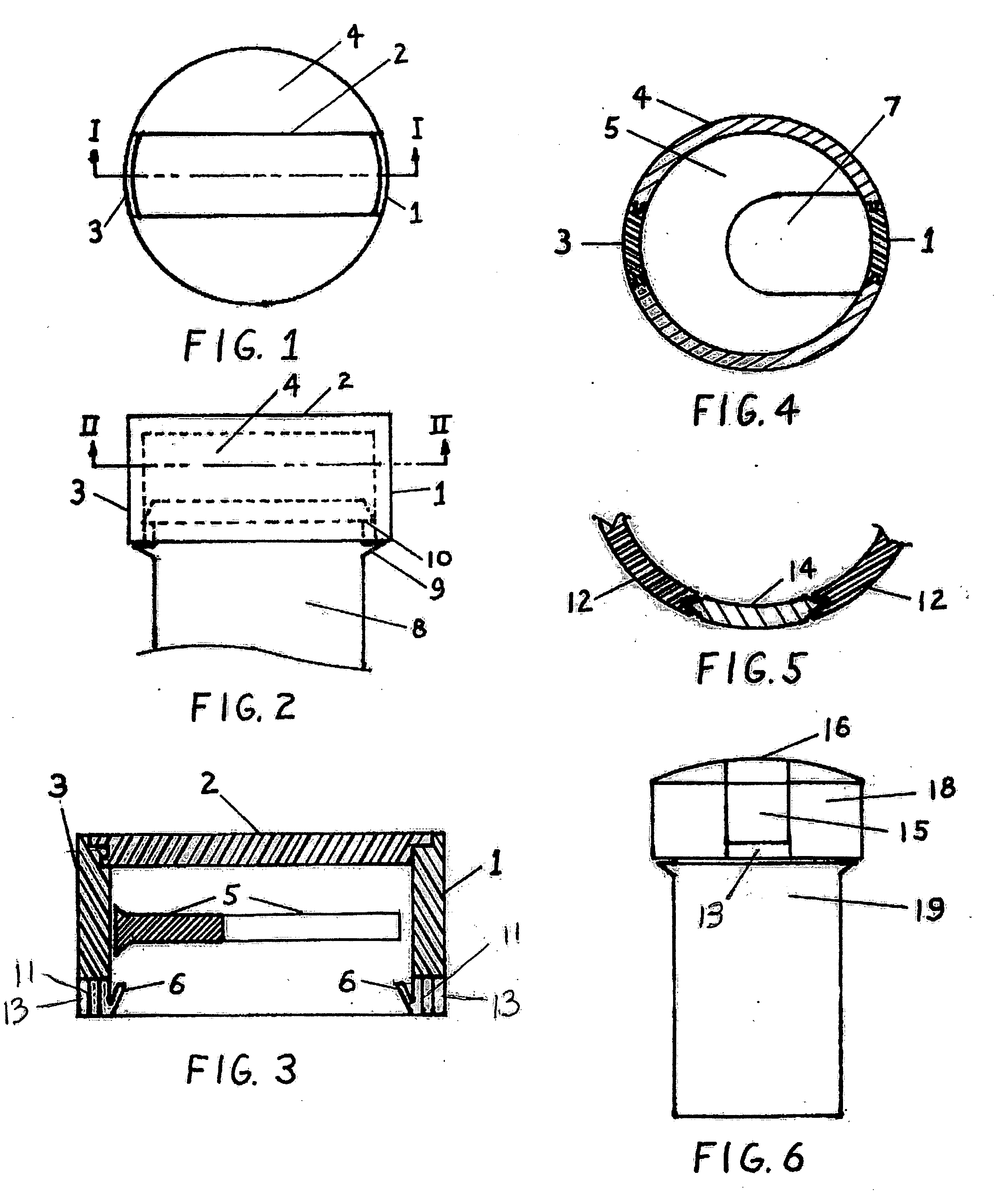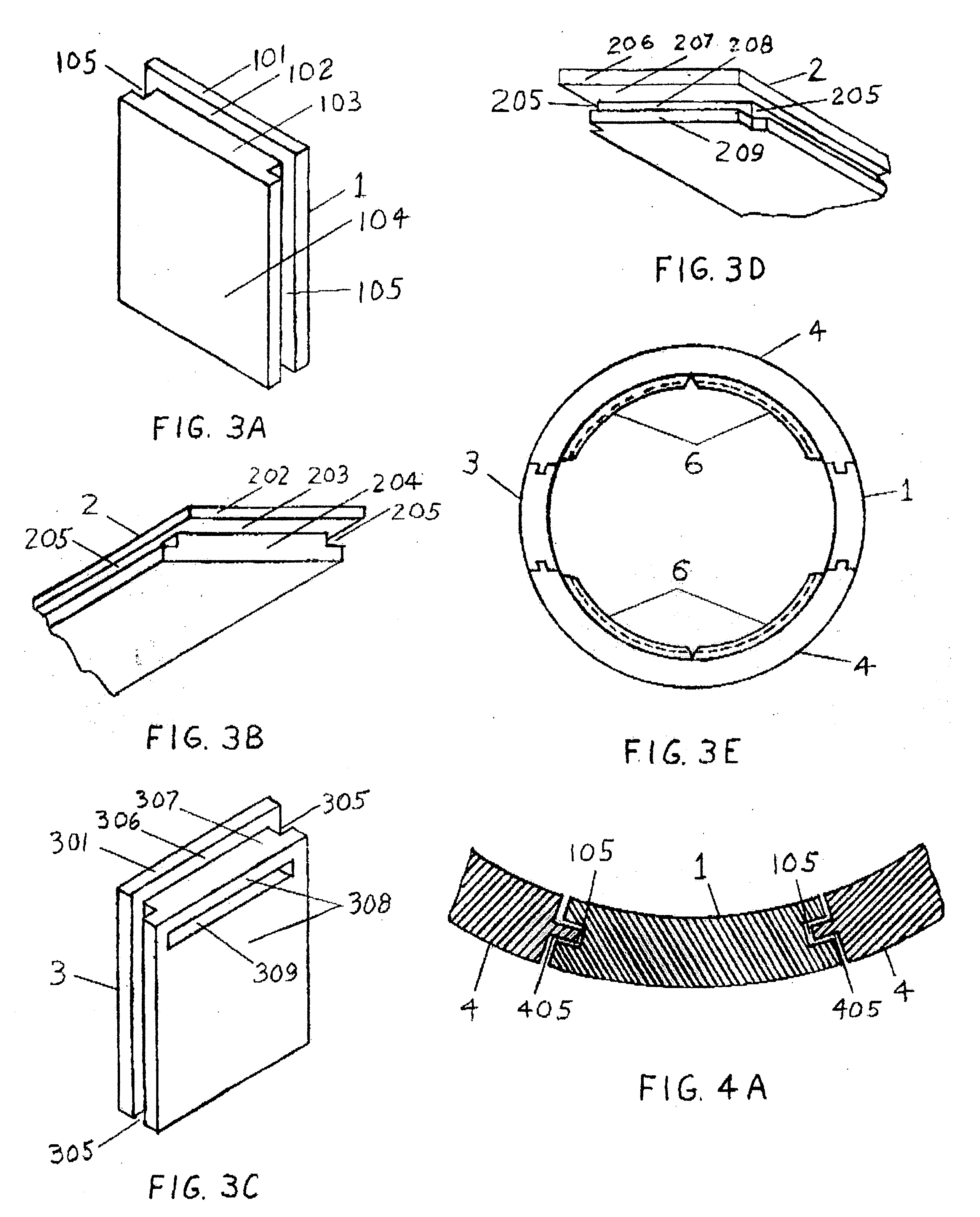Child-proof closure device
a closure device and child-proof technology, applied in the direction of closure stoppers, decorative covers, liquid dispensing, etc., can solve the problems of significant force and coordination, difficult for elderly or disabled people to open the closure, and more difficult for young children to gain access and subsequently consume dangerous materials, etc., to achieve the effect of easy dispensing through the opening and easy mastery
- Summary
- Abstract
- Description
- Claims
- Application Information
AI Technical Summary
Benefits of technology
Problems solved by technology
Method used
Image
Examples
Embodiment Construction
[0059]FIG. 1 shows a top view of a basic embodiment of the invention. Here, the closure or cap 4 contains three moveable slides 1, 2 and 3 that are interrelated and interlocked with each other. When the closure and container are resting on a horizontal surface such as a counter, table, shelf of a cabinet or the like, slides 1 and 3 are essentially vertical, and slide 2 is horizontal. Only a minor force is necessary to move any one of the slides, since their operation depends upon the knowledge of their use and function. Each slide moves in a plane, and opening and closing of the closure does not require any pressing down, lifting up, squeezing, twisting or a combination of such movements and pressures. In the common resting position, slides 1 and 3 are moved up or down and slide 2 is moved to the right or to the left. No alignment of the closure and the container is required and it can be operated in any position, resting on a surface, held at a 45 degree angle, or inverted. It can ...
PUM
 Login to View More
Login to View More Abstract
Description
Claims
Application Information
 Login to View More
Login to View More - R&D
- Intellectual Property
- Life Sciences
- Materials
- Tech Scout
- Unparalleled Data Quality
- Higher Quality Content
- 60% Fewer Hallucinations
Browse by: Latest US Patents, China's latest patents, Technical Efficacy Thesaurus, Application Domain, Technology Topic, Popular Technical Reports.
© 2025 PatSnap. All rights reserved.Legal|Privacy policy|Modern Slavery Act Transparency Statement|Sitemap|About US| Contact US: help@patsnap.com



